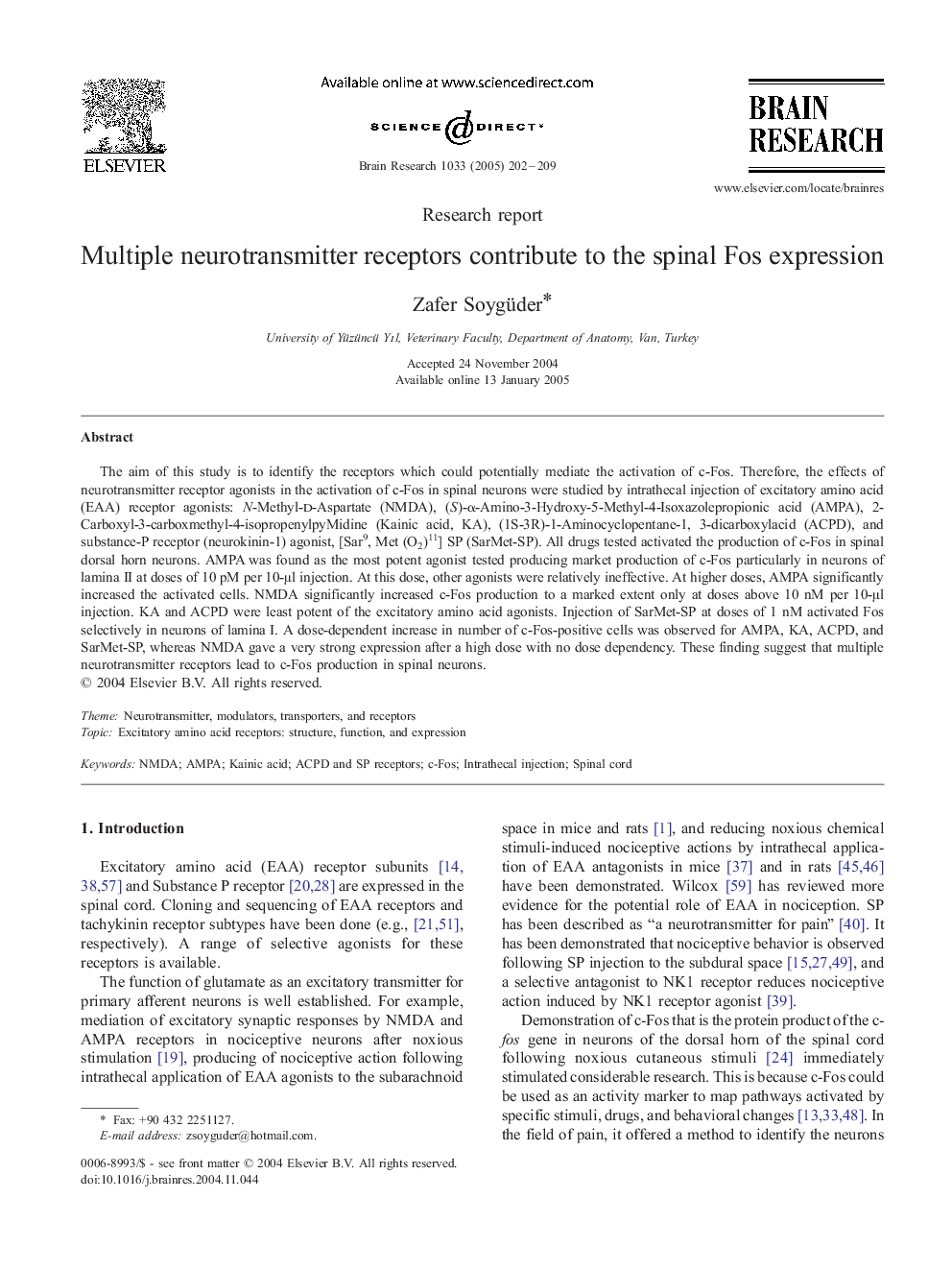| Article ID | Journal | Published Year | Pages | File Type |
|---|---|---|---|---|
| 9416878 | Brain Research | 2005 | 8 Pages |
Abstract
The aim of this study is to identify the receptors which could potentially mediate the activation of c-Fos. Therefore, the effects of neurotransmitter receptor agonists in the activation of c-Fos in spinal neurons were studied by intrathecal injection of excitatory amino acid (EAA) receptor agonists: N-Methyl-d-Aspartate (NMDA), (S)-α-Amino-3-Hydroxy-5-Methyl-4-Isoxazolepropionic acid (AMPA), 2-Carboxyl-3-carboxmethyl-4-isopropenylpyMidine (Kainic acid, KA), (1S-3R)-1-Aminocyclopentane-1, 3-dicarboxylacid (ACPD), and substance-P receptor (neurokinin-1) agonist, [Sar9, Met (O2)11] SP (SarMet-SP). All drugs tested activated the production of c-Fos in spinal dorsal horn neurons. AMPA was found as the most potent agonist tested producing market production of c-Fos particularly in neurons of lamina II at doses of 10 pM per 10-μl injection. At this dose, other agonists were relatively ineffective. At higher doses, AMPA significantly increased the activated cells. NMDA significantly increased c-Fos production to a marked extent only at doses above 10 nM per 10-μl injection. KA and ACPD were least potent of the excitatory amino acid agonists. Injection of SarMet-SP at doses of 1 nM activated Fos selectively in neurons of lamina I. A dose-dependent increase in number of c-Fos-positive cells was observed for AMPA, KA, ACPD, and SarMet-SP, whereas NMDA gave a very strong expression after a high dose with no dose dependency. These finding suggest that multiple neurotransmitter receptors lead to c-Fos production in spinal neurons.
Keywords
Related Topics
Life Sciences
Neuroscience
Neuroscience (General)
Authors
Zafer Soygüder,
